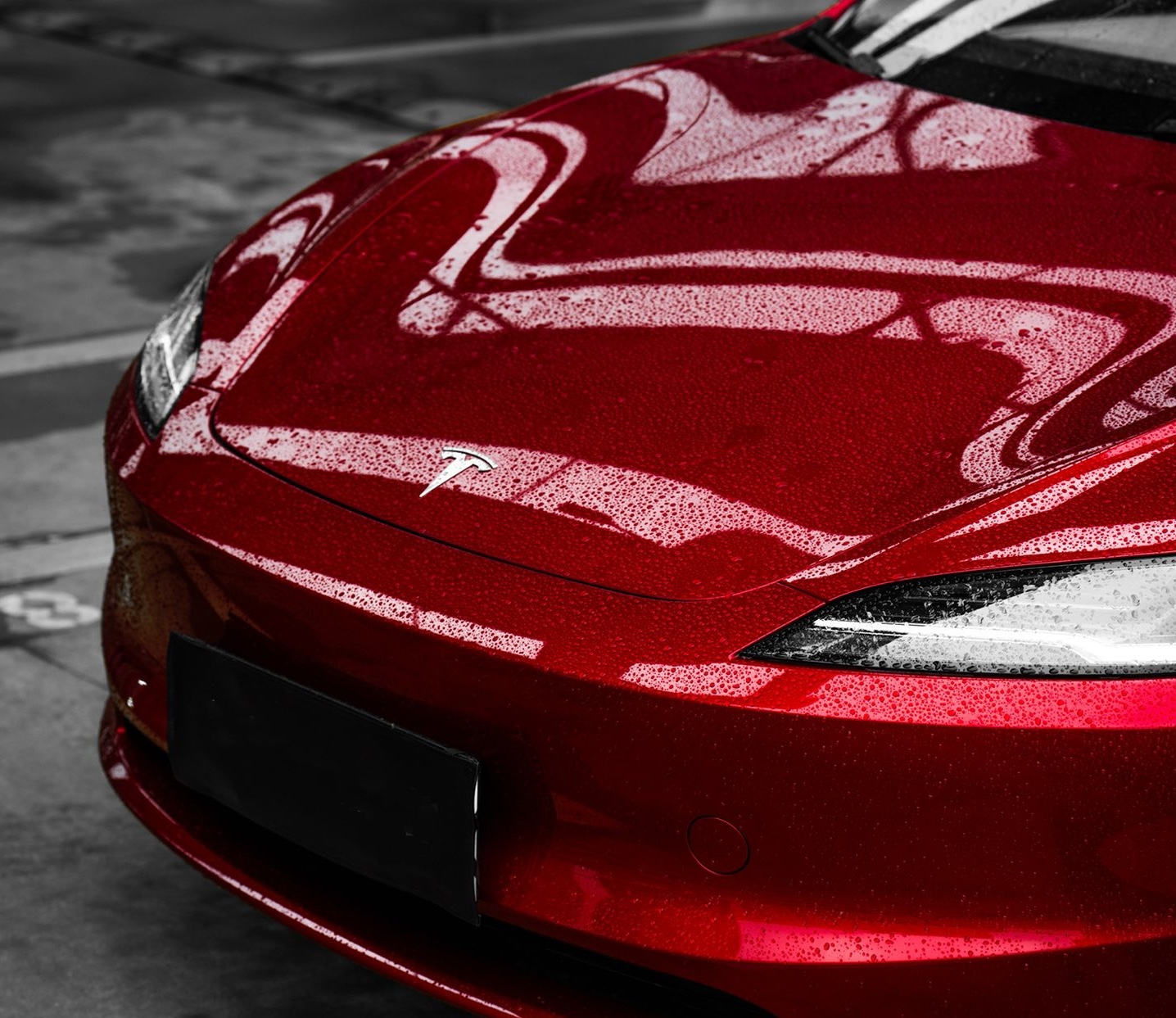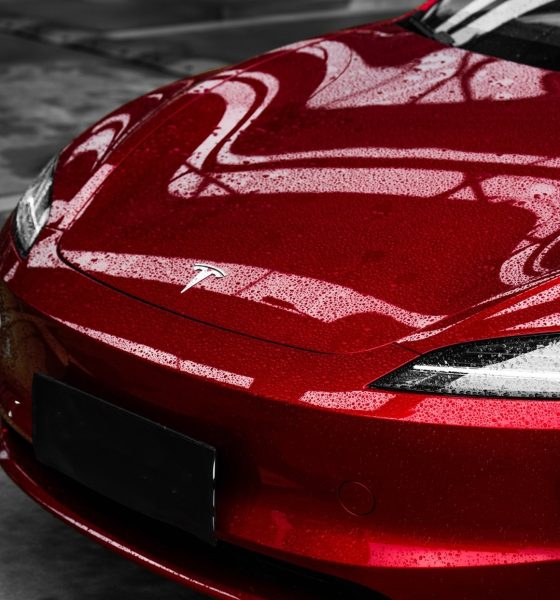In recent months, Tesla CEO Elon Musk has been far from the only person at the company using the X platform regularly to spread information about its products. Amidst calls for Tesla to advertise, the use of X from both executives and other employees has increased substantially in the past few months, not unlike how Musk has used the platform over the years.
Beginning around when the Cybertruck was released in November, executives and engineers from the company began sharing information about the pickup, and that has continued steadily since. Executives have also increasingly spoken directly to people on X about that and other subjects, sharing details about the company’s products and responding to some when they raise questions.
Tesla launches advertising on X in the U.S., expanding ‘small scale’ strategy outlined by Musk
Around the launch of the Cybertruck, Tesla employees who received early copies of the vehicle started posting about them regularly, noting specific details about the vehicles and often responding to users in the threads that followed. This played a seemingly key role in marketing the truck and bringing awareness of it to the public, while helping to spread correct information about them.
Below is a post made by Cybertruck Lead Engineer Wes Morrill in December, featuring his dog and talking about the vehicle’s rear seats at a time when little was known about the pickup.
Front seats have enough room underneath for a nice burrow, and it has a window… pic.twitter.com/AEuwBnaE1m
— Wes (@wmorrill3) December 17, 2023
Tesla executives have also been more vocal, both on X and in more regular media appearances, including people like Design Lead Franz von Holzhauzen, Vice President of Vehicle Engineering Lars Moravy, and Vice President of Investor Relations Martin Viecha, among others still.
These executives have, once again, been focused on educating the public about Tesla’s products, answering customer questions and responding to inaccuracies. Discussions have ranged from those on the Cybertruck and the upgraded Model 3 to the Optimus robot, the Full Self-Driving (FSD) beta and more.
Tesla Vice President of Public Policy and Business Development, Rohan Patel, has regularly been sharing information about the company’s products and ongoing plans for the past few months. As a recent example from last week, Patel responded directly to inquiries about when Tesla’s FSD beta would become available as a subscription in Canada, saying it was being worked on and would likely be in “the coming weeks.”
Elon approved this Canada update and the team is working on the technical and regulatory procedures to make sure we don’t trigger any unintended provincial issues. Barring any setbacks, I’d expect this in the coming weeks.
I take responsibility for missing this one when the… https://t.co/ZZjUjwMfRw
— Rohan Patel (@rohanspatel) March 9, 2024
Another example includes Tesla Director of Product Design Javier Verdura, who recently pointed out that the Cybertruck tent camper wasn’t fully set up in photos from one publication, making it look worse than when it’s set up properly.
The picture shown in the Electrek article is not properly nor fully set up. They literally posted the worst possible picture they could find. When set up properly, the tent looks great. When stowed, it hides neatly under the tonneau cover avoiding aero drag when driving
— Javier Verdura (@JVerdura) March 9, 2024
While CEO Elon Musk hasn’t slowed down in his posting habits, many of them are not about Tesla, SpaceX or his other companies these days, instead being about politics. Still, looking at Musk’s Twitter history, it isn’t hard to see how often he was using the platform to spread news and information about Tesla and SpaceX, all the way back to his early tweets in 2011 and 2012—and this approach seems to be similar to what many at Tesla are now following him into.
In 2022, Visual Capitalist published an article mapping out all of Musk’s tweets between 2012 and 2021, with the vast majority of them being related to Tesla and SpaceX. The piece also lays out the growth of Musk’s follower count during that time, which stands at 175.9 million at the time of writing, up from about 65 million when the article was published.
You can see a few of the graphics from the Visual Capitalist article below.
Credit: Visual Capitalist Credit: Visual Capitalist Credit: Visual Capitalist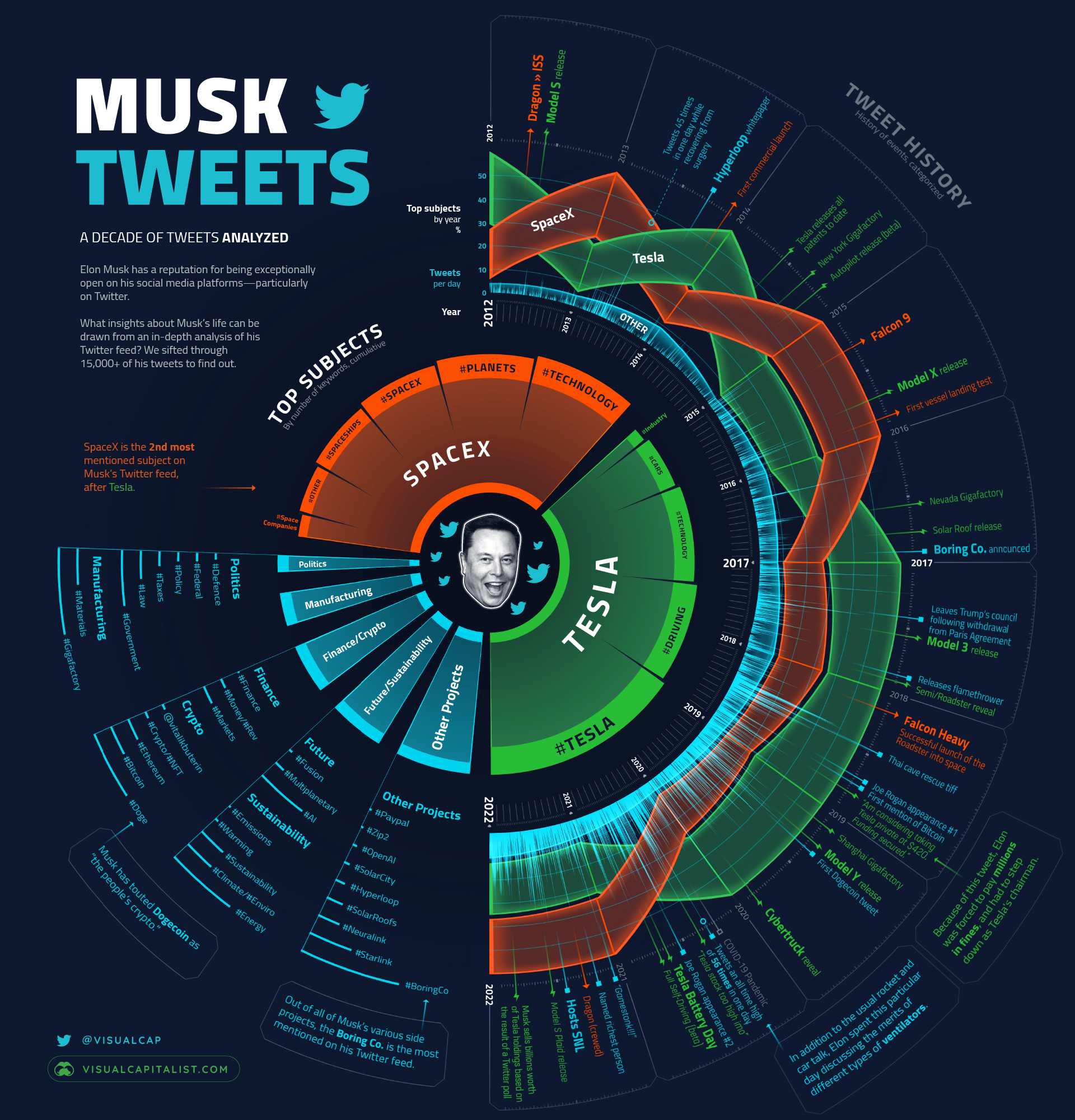
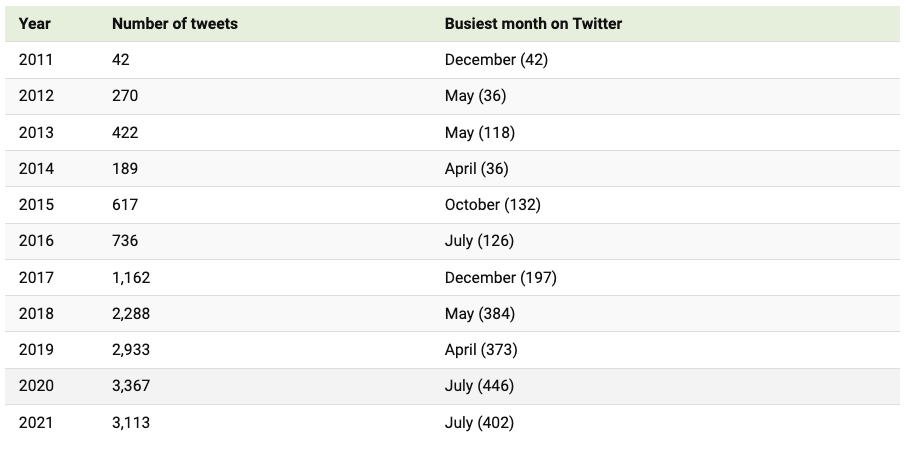
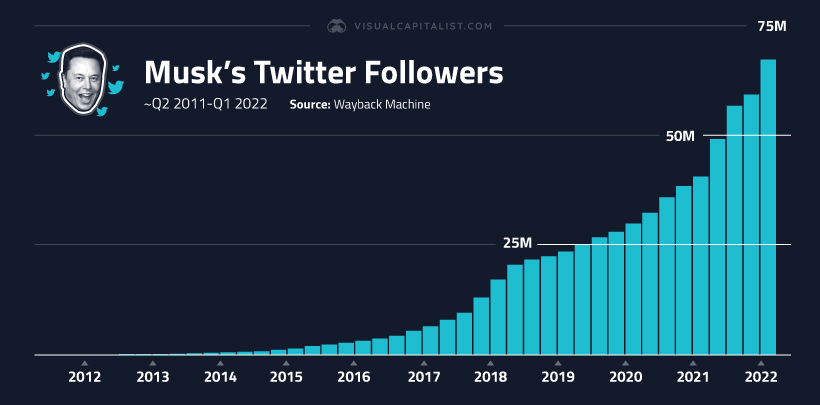
What are your thoughts? Let me know at zach@teslarati.com, find me on X at @zacharyvisconti, or send your tips to us at tips@teslarati.com.

Elon Musk
Starlink passes 9 million active customers just weeks after hitting 8 million
The milestone highlights the accelerating growth of Starlink, which has now been adding over 20,000 new users per day.

SpaceX’s Starlink satellite internet service has continued its rapid global expansion, surpassing 9 million active customers just weeks after crossing the 8 million mark.
The milestone highlights the accelerating growth of Starlink, which has now been adding over 20,000 new users per day.
9 million customers
In a post on X, SpaceX stated that Starlink now serves over 9 million active users across 155 countries, territories, and markets. The company reached 8 million customers in early November, meaning it added roughly 1 million subscribers in under seven weeks, or about 21,275 new users on average per day.
“Starlink is connecting more than 9M active customers with high-speed internet across 155 countries, territories, and many other markets,” Starlink wrote in a post on its official X account. SpaceX President Gwynne Shotwell also celebrated the milestone on X. “A huge thank you to all of our customers and congrats to the Starlink team for such an incredible product,” she wrote.
That growth rate reflects both rising demand for broadband in underserved regions and Starlink’s expanding satellite constellation, which now includes more than 9,000 low-Earth-orbit satellites designed to deliver high-speed, low-latency internet worldwide.
Starlink’s momentum
Starlink’s momentum has been building up. SpaceX reported 4.6 million Starlink customers in December 2024, followed by 7 million by August 2025, and 8 million customers in November. Independent data also suggests Starlink usage is rising sharply, with Cloudflare reporting that global web traffic from Starlink users more than doubled in 2025, as noted in an Insider report.
Starlink’s momentum is increasingly tied to SpaceX’s broader financial outlook. Elon Musk has said the satellite network is “by far” the company’s largest revenue driver, and reports suggest SpaceX may be positioning itself for an initial public offering as soon as next year, with valuations estimated as high as $1.5 trillion. Musk has also suggested in the past that Starlink could have its own IPO in the future.
News
NVIDIA Director of Robotics: Tesla FSD v14 is the first AI to pass the “Physical Turing Test”
After testing FSD v14, Fan stated that his experience with FSD felt magical at first, but it soon started to feel like a routine.

NVIDIA Director of Robotics Jim Fan has praised Tesla’s Full Self-Driving (Supervised) v14 as the first AI to pass what he described as a “Physical Turing Test.”
After testing FSD v14, Fan stated that his experience with FSD felt magical at first, but it soon started to feel like a routine. And just like smartphones today, removing it now would “actively hurt.”
Jim Fan’s hands-on FSD v14 impressions
Fan, a leading researcher in embodied AI who is currently solving Physical AI at NVIDIA and spearheading the company’s Project GR00T initiative, noted that he actually was late to the Tesla game. He was, however, one of the first to try out FSD v14.
“I was very late to own a Tesla but among the earliest to try out FSD v14. It’s perhaps the first time I experience an AI that passes the Physical Turing Test: after a long day at work, you press a button, lay back, and couldn’t tell if a neural net or a human drove you home,” Fan wrote in a post on X.
Fan added: “Despite knowing exactly how robot learning works, I still find it magical watching the steering wheel turn by itself. First it feels surreal, next it becomes routine. Then, like the smartphone, taking it away actively hurts. This is how humanity gets rewired and glued to god-like technologies.”
The Physical Turing Test
The original Turing Test was conceived by Alan Turing in 1950, and it was aimed at determining if a machine could exhibit behavior that is equivalent to or indistinguishable from a human. By focusing on text-based conversations, the original Turing Test set a high bar for natural language processing and machine learning.
This test has been passed by today’s large language models. However, the capability to converse in a humanlike manner is a completely different challenge from performing real-world problem-solving or physical interactions. Thus, Fan introduced the Physical Turing Test, which challenges AI systems to demonstrate intelligence through physical actions.
Based on Fan’s comments, Tesla has demonstrated these intelligent physical actions with FSD v14. Elon Musk agreed with the NVIDIA executive, stating in a post on X that with FSD v14, “you can sense the sentience maturing.” Musk also praised Tesla AI, calling it the best “real-world AI” today.
News
Tesla AI team burns the Christmas midnight oil by releasing FSD v14.2.2.1
The update was released just a day after FSD v14.2.2 started rolling out to customers.

Tesla is burning the midnight oil this Christmas, with the Tesla AI team quietly rolling out Full Self-Driving (Supervised) v14.2.2.1 just a day after FSD v14.2.2 started rolling out to customers.
Tesla owner shares insights on FSD v14.2.2.1
Longtime Tesla owner and FSD tester @BLKMDL3 shared some insights following several drives with FSD v14.2.2.1 in rainy Los Angeles conditions with standing water and faded lane lines. He reported zero steering hesitation or stutter, confident lane changes, and maneuvers executed with precision that evoked the performance of Tesla’s driverless Robotaxis in Austin.
Parking performance impressed, with most spots nailed perfectly, including tight, sharp turns, in single attempts without shaky steering. One minor offset happened only due to another vehicle that was parked over the line, which FSD accommodated by a few extra inches. In rain that typically erases road markings, FSD visualized lanes and turn lines better than humans, positioning itself flawlessly when entering new streets as well.
“Took it up a dark, wet, and twisty canyon road up and down the hill tonight and it went very well as to be expected. Stayed centered in the lane, kept speed well and gives a confidence inspiring steering feel where it handles these curvy roads better than the majority of human drivers,” the Tesla owner wrote in a post on X.
Tesla’s FSD v14.2.2 update
Just a day before FSD v14.2.2.1’s release, Tesla rolled out FSD v14.2.2, which was focused on smoother real-world performance, better obstacle awareness, and precise end-of-trip routing. According to the update’s release notes, FSD v14.2.2 upgrades the vision encoder neural network with higher resolution features, enhancing detection of emergency vehicles, road obstacles, and human gestures.
New Arrival Options also allowed users to select preferred drop-off styles, such as Parking Lot, Street, Driveway, Parking Garage, or Curbside, with the navigation pin automatically adjusting to the ideal spot. Other refinements include pulling over for emergency vehicles, real-time vision-based detours for blocked roads, improved gate and debris handling, and Speed Profiles for customized driving styles.
